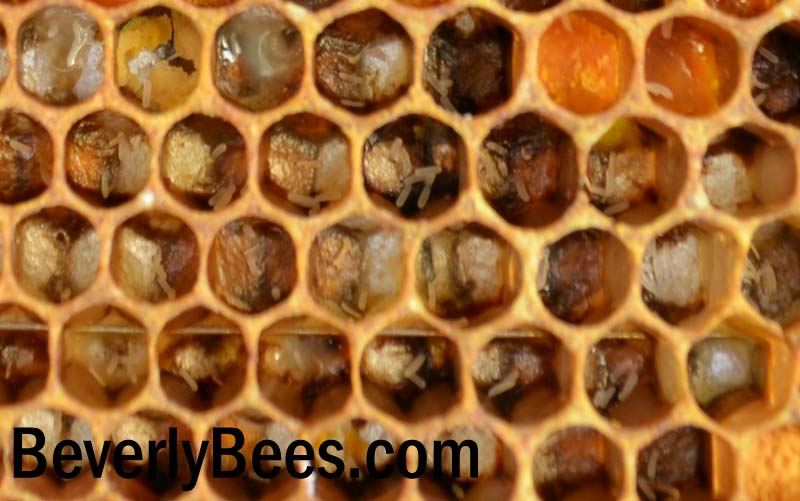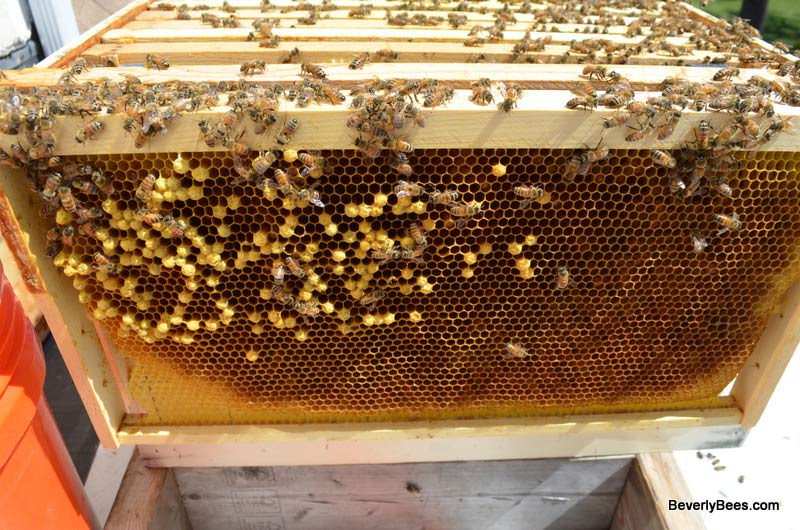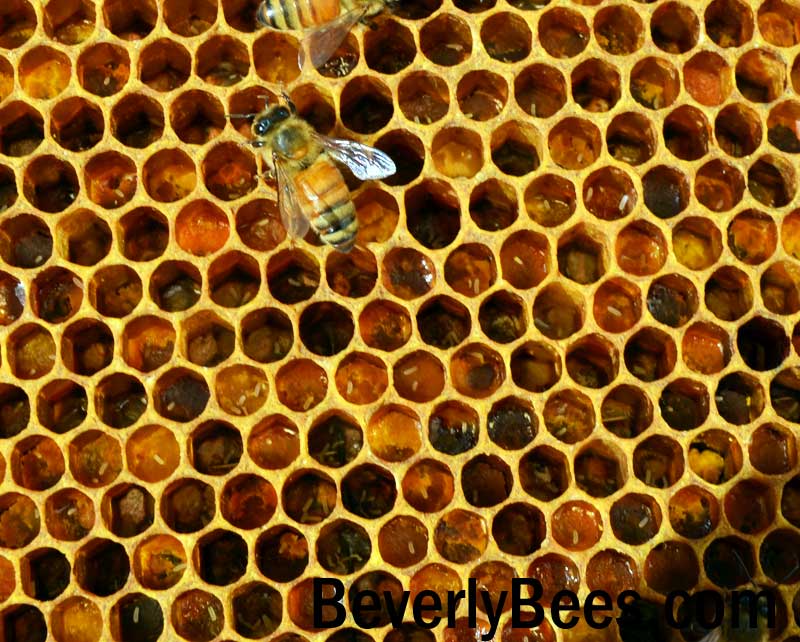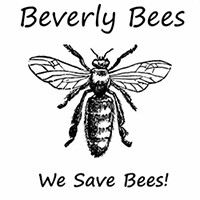Laying Workers
by Anita Deeley at BeverlyBees.com
When a hive goes hopelessly queenless and brood production ceases, after a period of time the hive may develop Laying Workers. Laying workers are just what they sound like, worker bees who lay eggs. The problem is these worker bees never went on a mating flight, like their queen did, and although they can lay eggs, they can only lay unfertilized eggs. In bees unfertilized eggs grow up to be drones or boy bees and fertilized eggs grow up to be girl bees, queens or workers. This becomes problematic for the hive because the drones only job is to mate with another queen, so while this is a good strategy to disperse their genetics to another hive, it does not bode well for the survival of the colony since the drones do not do any work. Over time the population of worker bees will decrease since no new workers are being raised. A laying worker colony will almost always die without intervention.

When a hive has laying workers, it has hundreds or more of them, not just a single laying worker. The smell of the brood pheromone is what suppresses the laying workers instinct to lay. Once the brood is gone, the laying workers kick into gear laying eggs just about everywhere. When a hive becomes laying worker, they will not accept a new queen easily because they consider themselves a queenright colony. You cannot simply requeen a laying worker hive, because they will try to kill the new queen.

You can recognize a laying worker hive, because worker bees will lay multiple eggs in cells. This is not enough to diagnose a laying worker hive however because sometimes new queens will also do this, as they over zealously start laying eggs, but queens will quickly correct themselves. While a queen will lay eggs in the center of the cell, laying workers will tend to lay eggs in the sides of cells, the cell walls, on pollen and will lay multiple eggs per cell. You may also see spotty drone brood in worker comb (although this can also be a sign of a failing queen as well).

The best method for fixing a laying worker colony is to combine the laying worker hive with a strong queenright hive. Do not combine the laying worker hive with a weak colony, they may just kill that colonies queen and you will wind up with an even larger laying worker colony. Most of the time combining the laying worker colony with another strong hive will work to fix the problem.

Some people suggest shaking out the bees 100 feet or so away from the hive. The idea here is the laying workers are the young nurse bees and by shaking them out they will not find their way home since they have never been out of the hive. This may or may not work.
Another way to fix a laying worker hive is to give them a frame of open brood once a week for 3 weeks, or until they start to try to raise their own queen. By the end of three weeks they should make their own queen, or accept a new one easier. The open brood pheromone will stop the laying workers from laying and by doing it over three weeks or longer it gives them the time they need to adjust. This method takes a lot of resources away from a strong hive, does not always work and when it fails it is epic.
Depending how severe the laying worker situation is and how long it has been going on should help you make a decision. Colonies that have been laying workers for several weeks and are reduced in population may not be worth saving at all. Do not boost these colonies by giving them resources from other colonies, it will just weaken a stronger colony to save a hopeless one and create even more laying worker bees. In this case it may be best to just shake the bees out, pick up the equipment and walk away.
Copyright © 2011-2014. Anita Deeley, BeverlyBees.com. All rights reserved.
